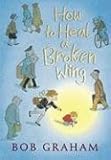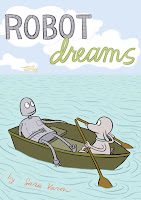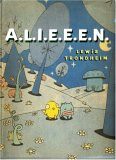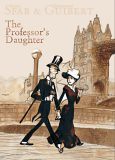new posts in all blogs
Viewing: Blog Posts Tagged with: 2nd, Most Recent at Top [Help]
Results 1 - 14 of 14
How to use this Page
You are viewing the most recent posts tagged with the words: 2nd in the JacketFlap blog reader. What is a tag? Think of a tag as a keyword or category label. Tags can both help you find posts on JacketFlap.com as well as provide an easy way for you to "remember" and classify posts for later recall. Try adding a tag yourself by clicking "Add a tag" below a post's header. Scroll down through the list of Recent Posts in the left column and click on a post title that sounds interesting. You can view all posts from a specific blog by clicking the Blog name in the right column, or you can click a 'More Posts from this Blog' link in any individual post.

By:
Darcy Pattison,
on 6/8/2012
Blog:
Darcy Pattison's Revision Notes
(
Login to Add to MyJacketFlap)
JacketFlap tags:
point of view,
POV,
novels,
3rd,
2nd,
1st,
first,
second,
third,
Add a tag
It’s a basic question: what is point of view and when do you use which point of view (or POV) in a novel?
Point of view refers to the basic outlook of your story, who narrates it.
First-person POV is firmly in a character’s head and told as if the character was narrating the action. It uses “I, me, my, myself” to indicate the narrator. Another description is to consider the placement of the story’s camera. Here, the camera sits firmly behind the character’s eyes. What the narrator thinks, the reader knows.
I am scared to try back handsprings at the football game tonight because I haven’t practiced enough.
Second-person POV uses “you” as it talks directly to the reader. It’s considered an awkward POV for most fiction, although there are, of course, exceptions. Camera placement here would be above the narrator’s head, pointed at the reader.
You will notice that the cheers will come out with a series of aerials, including back handsprings.
Third-person POV uses “he, she, it, they” pronouns as it refers to people and events. For this POV, we often speak of how “close” it is to the narrator. Close 3rd person POV puts the camera directly above the main character’s head and the camera placement tells the reader about what the character is paying attention to, what s/he is thinking. It is different from the 1st person POV, in that, we don’t know the narrator’s thoughts directly, but only indirectly. Sometimes, the Close 3rd gives information and the reader assumes the character thought that, said that or did that.
She hesitated, then with a burst of energy, she sprinted then threw herself forward into a back handspring.
The 3rd person POV can also draw back and be more detached, a recitation of a narrative from a more objective POV. The nicest thing is that this POV can change focal length at will, drawing back to describe a football field, then zooming in to the cheerleader as she does a back handspring and feels a muscle tear.
Her hands pushed off the grass and she catapulted over, a perfect back handspring, until—oh, no! Just as she landed, her ankle, it gave way. Pain shot through her foot and she collapsed.
Omniscient POV puts the camera on the ceiling looking down at everyone. It dips in and out of character’s thoughts and gives a comprehensive look at anything and everything the author wants. It’s difficult to pull off, too, because the reader is uncertain where to focus. If done badly, the reader may try to identify with too many characters and fail to really care about any of them.
Bored, her Mom glanced up from her text message in time to see Betty sprint for the handspring. Would this game never end?
Oh, no! Pain shot through Betty’s foot. Mom, she thought, Mom. Where are you?
Notice that this is a discussion of point of view, not verb tense. You can write in 1st person, present tense or 1st person, past tense:
1st person, present tense: I walk across the football field.
1st person, past tense: I walked across the football field.
The difference in verb tense definitely affects the overall tone and voice of your novel, so you should consider it, too, when you write.
Use this photo and try writing from the POV of the climber, from each of the observers, and from an omniscient POV. Each POV will include and
 Author: Emily Gravett
Author: Emily Gravett
Rating: 
Reading Level: K to 4
Publisher: Simon & Schuster
Edition: Hardcover, 2008This is a fantastic offer from a truly creative mind, and I believe also, from a team of designers and editors who put in so much in carrying out all the ideas: from the nibbled cover and pages, to the flip-the-flap effects, to the completely black page (yes, I was fooled in thinking, 'huh? this is the end of the book? No way...' and found out, to my great delight, that there is still half of the book to go and plenty more of information to come!) And of course, Gravett's talent in illustration is unparalleled! I just love that pencil, getting gnawed to a stub bit by bit.
It will appeal to those children who love words and love to collect the names of so many phobias. It will appeal to those children who love poring over pages with extra words and details quite a few times over. It will appeal to those who enjoy visual jokes ("I worry about having accidents." page has Little Mouse ... um... accidentally leaves something on the bottom of the page... -- opposing the picture of a toilet.)
I love the page where all the feathers "have eyes" and "sharp teeth." I love the page with the newspaper clipping about the farmer's wife and the three mouse tails. I love the page with the fold-out map of the Isle of Fright. Actually.. I think I simply love all the pages, each for a different reason.
View all my goodreads reviews.
 Author: Heather Henson, illus. by David Small
Author: Heather Henson, illus. by David Small
Rating: 
Reading Level: K - 2
Publisher: Atheneum
Edition: Hardcover, 2008
Even though I knew from page 2 that this is a little story on the power of books and libraries, and that this young boy narrator will become a reader in the end, I did not feel disappointed when all the prediction came true. This is due to the artistry of both the author and the illustrator. Henson's text is folksy and true, with a wonderful lilting pace, while Small's illustrations are gentle but at the same time with a quiet but majestic integrity. Of course, being a librarian, I am completely won over. (Just so you know, I am usually very suspicious of books glorifying Library Services and Librarians -- oftentimes, I find those "books and reading are GREAT stories" corny and cringe-inducing.) I hope that others who are not in our profession will also find this fact-based story completely winning.
View all my goodreads reviews.

By:
fairrosa,
on 11/10/2008
Blog:
Fairrosa's Reading Journal
(
Login to Add to MyJacketFlap)
JacketFlap tags:
YA,
adult,
nonfiction,
5 stars,
6th,
7th,
5th,
4th,
3rd,
K,
2nd,
1st,
8th,
Add a tag
 Author: Ben Boos
Author: Ben Boos
Rating: 
Reading Level: for all readers
Pages: 96
Publisher: Candlewick
Edition: Hardcover, 2008
I couldn't believe my eyes, flipping through page after page of beautifully rendered swords from many time periods and many cultures, how visually perfect this book is! No matter whom I showed this book to (HS students, MS kids, other adults) - the reaction was the same: an astounded delight at this Feast of the Artistry of Beautiful and Elegant Swords. I'm glad the inclusion of Asian and African swords and their histories (although would have like a more balanced proportion in treatment...)
This makes a great holiday gift for any child who enjoys this topic. The general and specific notes on various types, their usages, their histories, and those who used such and such swords are easy to read and absorb. But one definitely doesn't need to read all the text to enjoy the book.
I am so happy of this book's existence!
View all my reviews on Goodreads.

By:
fairrosa,
on 10/11/2008
Blog:
Fairrosa's Reading Journal
(
Login to Add to MyJacketFlap)
JacketFlap tags:
Picture Book,
biography,
5 stars,
5th,
4th,
3rd,
K,
2nd,
1st,
Pre-K,
Add a tag
 Author: Jen Bryant; illustrated by Melissa Sweet
Author: Jen Bryant; illustrated by Melissa Sweet
Rating: 
Reading Level: pre-k to 5th grade (depending on how the book is to be used)
Publisher: Eerdmans
Edition: Hardcover, 2008
Oh, how I absolutely
love this book
adore it
for its simple
informative text
admire it
for the collage and
water color illustrations
showing the time
the world and
the spirit of the poet
who was a doctor,
healed wounds,
delivered babies,
and soothed
our souls
View all my reviews on Goodreads.
Author: Bob Graham (illus.)
Rating: 
Reading Level: toddler to 3rd grade
Publisher: Candlewick
Edition:Hardcover, 2008

Since I am not one who usually loves books with strong and obvious messages, I surprised myself for really liking this one. Why? First and foremost, I think it is because that there is a real plot and emotional arc in the telling of this gentle and simple story of hope. Hope in healing the wounds of the world (a page with the TV screen showing the current War in contrast with the family's loving care of the bird); hope in having our next generations to have compassion for the world around them; and hope for the inter-generational "collaboration" in finding ways to heal.
Graham's cartoon illustrations do not reduce the emotional impact of the story -- the varied composition, perspectives, page layouts, all contribute beautifully to accentuate the events and the interior motions of the characters. That one spread where you only see Will and the bird with broken wing (as an extreme close-up from the spot on the cover) is superb! The more and more closely I examine this work, the more I appreciate it. (So, just changed from 4 to 5 stars!)
View all my reviews on Goodreads.
Although I am only talking about one book today, by way of an example, I am really ranting about a fairly wide-spread phenomenon in Children's Publishing of late -- that of a lack of careful copy-editing. Copy-editing is defined briefly as: to mark errors of spelling, grammar, punctuation and word usage to prepare the manuscript for final printing so each finished book is as error-free as possible. I am unsure whether there are still full-time copy-editing staff in most children's publishing houses these days (maybe someone can speak to this in a comment?) but from the number of errors one encounters in children's books these days, it seems that human copy-editing has become an obsolete art. If you have read a lot of recent children's books as I have done, you'll know what I'm talking about.
I just finished reading a very well-written and exciting story by Polly M. Robertus, entitled The Richest Doll in the World. It's a Holiday House 2008 publication. Judging from the font size and the length (129 pages,) I have no problem thinking of this book as for fairly beginning readers. Say, 2nd to 4th graders. It is even more inexcusable that the copy-editing is so sloppy! Here are a few page scans to illuminate my concerns. Before you read on and see for yourself whether this is a serious issue, I just want to say how sorry I feel for the author of this book. I can only imagine how much time, effort, hope, and heart went into writing, revising, and perfecting the telling of this entertaining and heartwarming story and yet, as a librarian, I cannot feel comfortable recommending this book to my young readers due to its poor copy-editing. I wonder if I am alone in feeling this way?
p. 18

You
lust haven't tried hard enough...LUST?
I can just imagine how a 2nd grader reading this book asks her mom, "Mommy, what is LUST? I don't understand this sentence. What does 'lust haven't tried' mean?" Try explaining that one!
p. 26

Last time I checked (2 seconds ago,) the word
"sidesh" has not made its way into the Merriam Webster Dictionary yet. (One would imagine that even a computer spell checking program would have picked up completely non-existing words and corrected the error. Did the production team not even bother with a once-over using a free program?)
These two are both from p. 34 -- and I was simply baffled by the abundance of commas...


Author: Daniel Pinkwater; illustrated by D.B. Johnson
Rating: 
Reading Level: pre-k, k, 1, 2
Pages: np
Publisher: Houghton Mifflin
Edition: Hardcover, 2008 
Absolutely fabulous! The text is matter-of-fact; straightforward; and it conveys a great sentiment -- the artist's own interpretation is enough to make any artwork worthwhile. A bear can be a painter and he can paint whatever he feels like and see whatever there is in the picture without being told by others that he can't paint or what his artwork means.
And the ART in this book is unusual, for sure. The contrast between the gray-scale color scheme of the three characters and the vibrant multi-colored painting keeps the readers' focus on the "real" protagonist of the story: the painting, in progress and in its final state. I love how the bear's scarf gets progressively messier, with more colors until it's completely covered. And of course, the page where you must turn the book around to see the final picture from bear's point of view of a bear that is embedded within the autumn honey tree, cool stream, hollow log, field of flowers, and the two gentlemen's hats is such a beautiful and breathtaking moment! The color scheme reminds of of Kandinsky and Klee in their modern, abstract style. The final image of bear sleeping in the hollow log (his own creation) engulfed by the snow is the perfect and calm end note to a rigorous story.
View all my reviews on GoodReads.
Author: Stian Hole
Rating: 
Reading Level: K to 3rd
Pages: n.p.
Publisher: Eerdmans
Edition: Hardcover, 2008What an unusual book. At first glance, the images turned me off -- from the cover to the first pages -- with the weirdly proportioned heads/bodies done with photo-collages. Then.. I got sucked into this style and most importantly, I got mesmerized by the text and by the matter-of-fact tone of everyone's answer to Garmann's queries about death and fears. The illustrations eventually reminded me of Terry Gillian's work for Monty Python's Flying Circus with many pages featuring curving flower stems and vines and the unlikely pairings of objects: the ancient aunt on a skateboard above skyscrapers or the bus load of images of famous jazz and other musicians... So, this is a very strange experience: from "Ugh" to "Brilliant!!!"
View all my reviews.
by Sara Varon
 You know when you're hungry, and you're looking for something to eat, and you finally think of something, and you eat it, and it was the perfect snack? It absolutely hit the spot? That was what Robot Dreams was like for me. It's a wordless graphic novel about a dog and a robot, and it delighted me to no end. The illustrations were so lovely that, although I wanted to find out how the story would end, I also wanted it to go on forever so I could keep looking at them. Everything about the book is charming and adorable. It was just what I needed to read: it hit the spot.
You know when you're hungry, and you're looking for something to eat, and you finally think of something, and you eat it, and it was the perfect snack? It absolutely hit the spot? That was what Robot Dreams was like for me. It's a wordless graphic novel about a dog and a robot, and it delighted me to no end. The illustrations were so lovely that, although I wanted to find out how the story would end, I also wanted it to go on forever so I could keep looking at them. Everything about the book is charming and adorable. It was just what I needed to read: it hit the spot.
**
Robot Dreams has been short-listed for a Cybils award. Winners in all categories will be announced this Thursday!

Every once and a while, a book crosses your path that you can't help but reading twice in a row. And, that's a strange phenomenon when said book has no words at all. Are you reading? And, are you re-reading? When the book in question is as lovely and thought-provoking as Sara Varon's Robot Dreams, the answers to these questions must be 'yes' and 'yes again.'
Robot Dreams begins in August as Dog waits for the postman. Finally, the mail arrives with a build-your-own robot kit and Dog sets to work. Dog and Robot become fast friends and eventually travel by bus to the beach. There Robot and Dog play, sit in the sun, and swim in the water. Dog, unfortunately, doesn't know that robots shouldn't swim. When Robot rusts and locks up, Dog abandons his friend immobilized on the sand. Dog researches robot repair, but by the time he returns to the beach, it has closed for the summer.
Robot Dreams follows Dog throughout the year as he misses his friend the robot and is wracked with guilt. We follow Robot too, as he dreams and becomes covered in snow. Robot's dreams are joyful--he flies with the birds, sits by the ocean, and walks hand and hand with a flower in spring. Dog is not as lucky. No one is as good a friend as robot was.
When next July comes around, both Dog and Robot's prospects improve. I won't spoil the ending, but I will tell you that a wonderfully scrappy raccoon is involved.
Robot Dreams is a novel a child as young as seven or eight may enjoy, though it will be most appreciated by readers unlucky enough to be in Middle School. Varon's treatment of friendship--and its painful loss--is universal. Anyone who has lost a friend--whether by carelessness, a move, or simply because that friend has walked away--will appreciate this book. If a wordless graphic novel can be lyrical, Robot Dreams is just that--lyrical. Share this one with readers ages eight and up.
========
Other blog reviews:
A Fuse #8 Production
Dawn of the Read
Shelf Elf
Kelly Fineman
I told you I'd get back to kidlit. Man, I really am obsessed with First Second.
We'll start with the wonderful
Robot Dreams by Sara Varon.
This is a heartbreaking word-less graphic novel about a doomed friendship. Dog wants a friend, so mail orders a build-your-own robot kit. Dog and Robot have lots of fun together--mainly reading books and watching movies from the library.
Then Dog takes Robot to the beach. After swimming and lying in the sun all day, Robot has rusted and can't move. Dog leaves him there. Dog studies up on robot repair, but by the time he gets back to the beach, it is closed.
Robot spends the winter, buried under snow, dreaming of different adventures. Dog tries (unsuccessfully) to make new friends to replace the one he's lost.
Bittersweet and lovely.
Full Disclosure: ARC provided by publisher FirstSecond at ALA.
A.L.I.E.E.E.N.: Archives of Lost Issues and Earthly Editions of Extraterrestrial Novelties by Lewis Trondheim
Oh man, this is weird.
Let's just say it starts off with two ugly/cute aliens skipping along an alien meadow. The blue one has is eyes closed and immediately skips into a tree with two unfortunately placed branches and gouges his eyes out...
Because I have a very sick sense of humor, I found it hilarious.
Where this isn't wordless, all the words are in an alien language, so it might as well be. There are several short, interconnected adventures that involve lots of alien violence and poop.
It is weird and bizarre, but I liked it.
The Professor's Daughter by Joann Sfar. Illustrated by Emmanuel Guilbert
I'm torn on the age range on this. My library puts it as adult, but I think it's more of a late jr high/ high school on up. (SLJ says it's 10th grade+)
Anyway, in this Victorian London, mummies (the Egyptian kind) can walk and talk and feel emotion, even though they've been dead for milennia. This is a love story between Imhotep IV and the daughter of the professor who oversaw his excavation.
An afternoon stroll goes horribly awry and leads in a poisoned police officer, a kidnapped Queen Victoria, and the threat of Imhotep being placed in an exhibit case at the museum for the foreseeable future.
Along the way, we deal with culture and time clash, fathers and sons, and fathers and daughters. It's short, sweet, and packs a lot of punch, which is superbly delivered with Guilbert's muted watercolors that perfectly capture not only the sweetness of love and the time and place...
Read the rest of this post

By:
fairrosa,
on 8/9/2007
Blog:
Fairrosa's Reading Journal
(
Login to Add to MyJacketFlap)
JacketFlap tags:
book notes,
K,
2nd,
1st,
Picture Book,
2nd,
book notes,
K,
1st,
Add a tag

Author:Jeremy Tankard (illustrator)
Rating: 
Reading Level: Pre-k to 2nd
Pages:
Publisher: Scholastic Press
Edition: Hardcover, 2007I LOVE the grumpiness of Bird and his host of 4-legged friends who totally are so clueless to his mood. The Wahaha-WOW ending is so unexpected and satisfying. There is a great momentum building through this seemingly simplistic picture book.
Tankard's thick-black-outlined endearing group of animals and brush-painting trees, accompanied by bleached photo background is dexterously done. There is just so much to look at and such a joy to read aloud and to share!
 PW Children's Books Fall 2007...
PW Children's Books Fall 2007...
Guess what just landed in my inbox? The Publishers Weekly Children's Books Fall 2007 issue! It's chock full of info on "nearly 3,000" upcoming books with cover illustrations thrown in here and there, along with colorful full-page ads from many many children's publishers. It sort of like a collection of mini publishers' catalogs.
The cover features a darling illustration by Sara Varon that I discovered after ripping off the ad-cover "Introducing '70s girl Julie Albright," American Girl's newest character who seems to have stolen the exact outfit I wore for my class picture in the fifth grade.
If you want to grab a copy of this issue from the newsstand, the cover price is $12.






















We displayed it as soon as we got it and I don't think it's been on our shelves yet!
Okay, I had to reserve this one from the public library, since this is the second review I've seen. I'm not even that interested in swords and it looks very cool!
Hi, is there an email address to contact this blog? Thanks, Shari